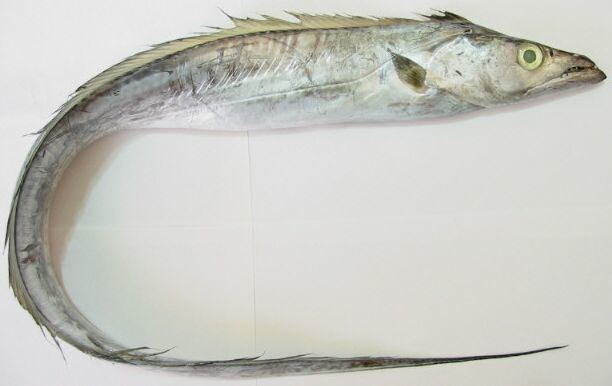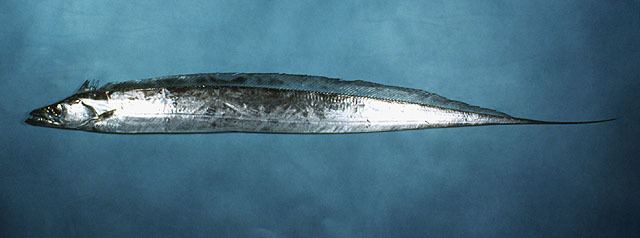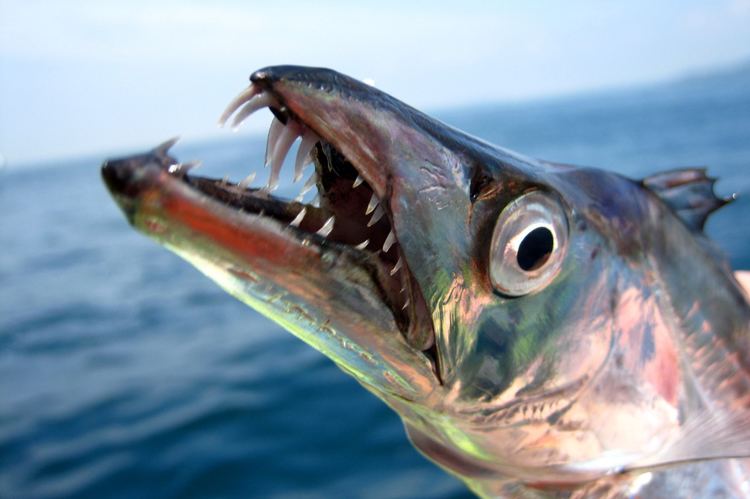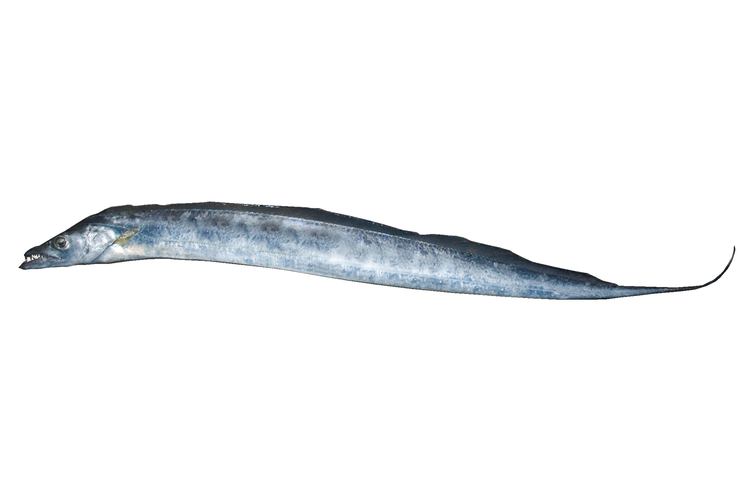Mass 2.8 kg (Adult) Rank Species | Phylum Chordata Family Trichiuridae Scientific name Trichiurus lepturus Length 46 cm (Mature) Higher classification Trichiurus | |
Similar Jorim, Chub mackerel, Japanese Spanish mackerel, Atlantic horse mackerel, Sebastes inermis | ||
Tokyo sea life park largehead hair tail trichiurus lepturus
The largehead hairtail (also beltfish, Trichiurus lepturus) is a member of the cutlassfish family, Trichiuridae. It is a long, slender fish found throughout the tropical and temperate oceans of the world. The Atlantic, East Pacific and Northwest Pacific populations are also known as Atlantic cutlassfish, Pacific cutlassfish and Japanese cutlassfish, respectively.
Contents
- Tokyo sea life park largehead hair tail trichiurus lepturus
- Fishing for cutlassfish ribbonfish in kiptopeke va
- Taxonomy
- Behavior
- Fisheries and usage
- References

Largehead hairtails can grow to 2.34 m (7.7 ft) in length, although most only are 1 m (3.3 ft). The largest recorded weight is 5 kg (11 lb) and the oldest recorded age is 15 years. They prefer coastal regions and sometimes enter estuaries. They are found at depths of 0 to 589 m (0 to 1,932 ft) with most records between 100 and 350 m (330 and 1,150 ft).

Fishing for cutlassfish ribbonfish in kiptopeke va
Taxonomy

Although often considered a single highly widespread species, it has been argued that it is a species complex that includes several species with the main groups being in the Atlantic (Atlantic cutlassfish), East Pacific (Pacific cutlassfish), Indo-Pacific and Northwest Pacific (Japanese cutlassfish). If split, the Atlantic would retain the scientific name T. lepturus. The Northwest Pacific (Sea of Japan and East China Sea) differs in morphometrics, meristics and genetics, and is sometimes recognized as T. japonicus. Morphometric and meristic differences have also been shown in the population of the East Pacific (California to Peru), leading some to recognize it as T. nitens. Additional studies are required on the possible separation and nomenclature of the Indo-Pacific populations, but based on mtDNA there are three species in this region: T. japonicus (marginal in the region, see range above), T. lepturus (West Pacific; the species also found in the Atlantic) and the final preliminarily referred to as Trichiurus sp. 2 (Indian Ocean, and East and South China Seas). The names T. coxii and T. haumela have been used for the populations off Australia and in the Indo-Pacific, respectively, but firm evidence supporting their validity as species is lacking.
Behavior

Juveniles participate in the diel vertical migration, rising to feed on krill and small fish during the night and returning to the sea bed in the day. This movement pattern is reversed by large adults, which mainly feed on fish. Other known prey items include squid and shrimp, and the highly carnivorous adults regularly cannibalise younger specimens.
Spawning depends on temperature as the larvae prefer water warmer than 21 °C (70 °F) and are entirely absent at less than 16 °C (61 °F). Consequently, spawning is year-round in tropical regions, but generally in the spring and summer in colder regions.
Fisheries and usage
Largehead hairtail is a major commercial species. With reported landings of more than 1.3 million tonnes in 2009, it was the 6th most important capture fish species. By far the largest catches were reported by China (1.2 million tonnes) from the NW Pacific (FAO Fishing Area 61); other countries reporting significant catches were South Korea, Japan, and Pakistan.
In Korea, the largehead hairtail is called "갈치 (Kalchi):sword fish",in which "갈(Kal)" means sword and "치(chi)" means fish, and is popular for frying or grilling. In Japan, where it is known as tachiuo ("太刀(tachi)":sword, "魚(uo)":fish), they are fished for food and eaten grilled or raw, as sashimi. They are also called "sword-fish" in Portugal and Brazil (peixe-espada), where they are eaten grilled or fried. Its flesh is firm yet tender when cooked, with a moderate level of "fishiness" to the smell and a low level of oiliness. The largehead hairtail is also notable for being fairly easy to debone.
